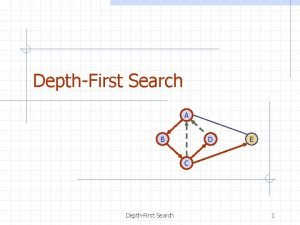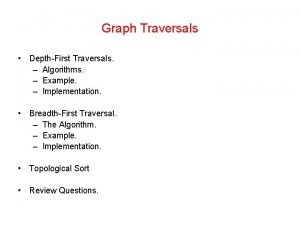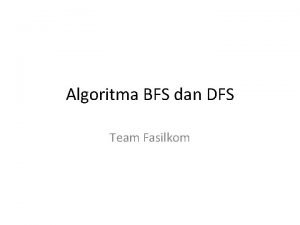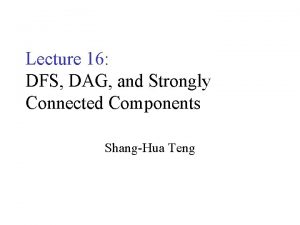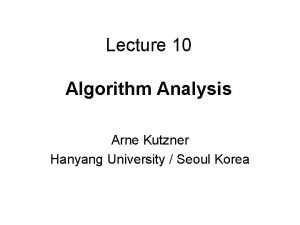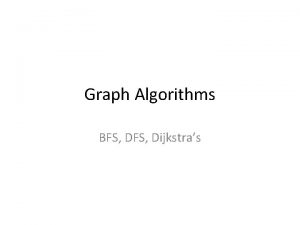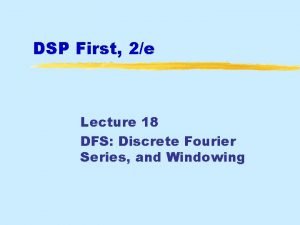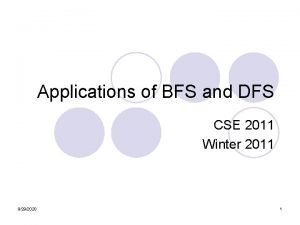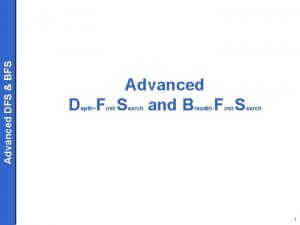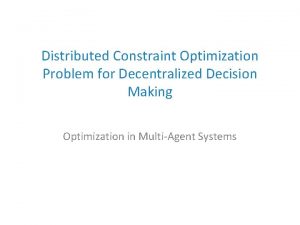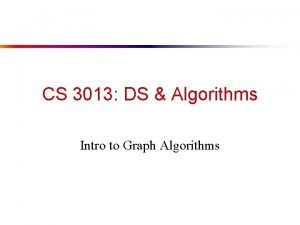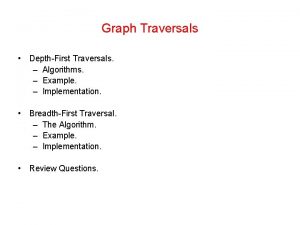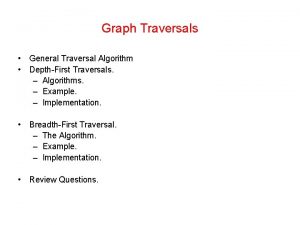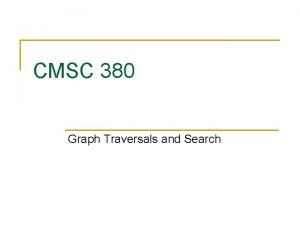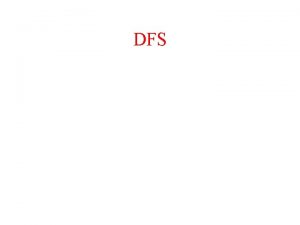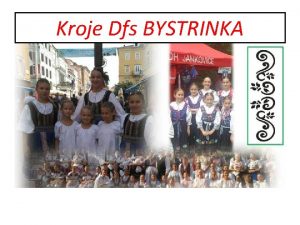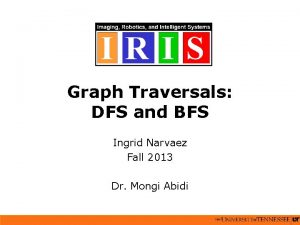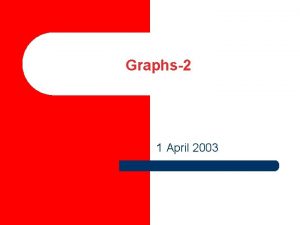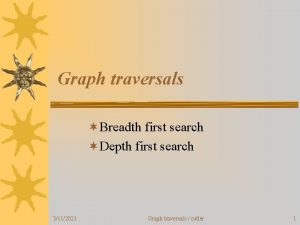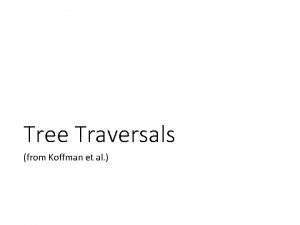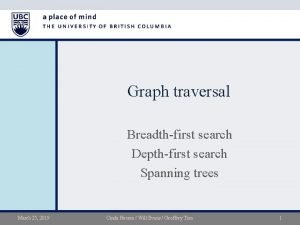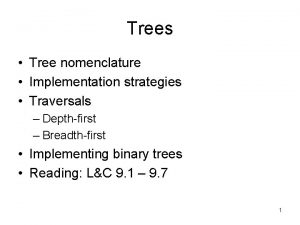DepthFirst Search Graph Traversals DepthFirst Search DFS 1




















- Slides: 20

Depth-First Search • Graph Traversals • Depth-First Search DFS 1

Exploring a Labyrinth Without Getting Lost • A depth-first search (DFS) in an undirected graph G is like wandering in a labyrinth with a string and a can of red paint without getting lost. • We start at vertex s, tying the end of our string to the point and painting s “visited”. Next we label s as our current vertex called u. • Now we travel along an arbitrary edge (u, v). • If edge (u, v) leads us to an already visited vertex v we return to u. • If vertex v is unvisited, we unroll our string and move to v, paint v “visited”, set v as our current vertex, and repeat the previous steps. DFS 2

Exploring a Labyrinth Without Getting Lost (cont. ) • Eventually, we will get to a point where all incident edges on u lead to visited vertices. We then backtrack by unrolling our string to a previously visited vertex v. Then v becomes our current vertex and we repeat the previous steps. • Then, if we all incident edges on v lead to visited vertices, we backtrack as we did before. We continue to backtrack along the path we have traveled, finding and exploring unexplored edges, and repeating the procedure. • When we backtrack to vertex s and there are no more unexplored edges incident on s, we have finished our DFS search. DFS 3

Depth-First Search Algorithm DFS(v); Input: A vertex v in a graph Output: A labeling of the edges as “discovery” edges and “backedges” for each edge e incident on v do if edge e is unexplored then let w be the other endpoint of e if vertex w is unexplored then label e as a discovery edge recursively call DFS(w) else label e as a backedge DFS 4

Depth-First Search DFS 5

Determining Incident Edges • DFS depends on how you obtain the incident edges. • If we start at A and we examine the edge to F, then to B, then E, C, and finally G The resulting graph is: discovery. Edge back. Edge return from dead end 6

Determining Incident Edges • If we instead examine the tree starting at A and looking at F, the C, then E, B, and finally F, the resulting set of back. Edges, discovery. Edges and recursion points is different. • Exercise: Try trying the discovery and back edges if the search is done in the above order. • Now an example of a DFS. 7

DFS 8

DFS 9

DFS 10

DFS 11

DFS 12

DFS 13

DFS 14

DFS 15

DFS 16

And we’re done! DFS 17

DFS Properties • Proposition 9. 12 : Let G be an undirected graph on which a DFS traversal starting at a vertex s has been preformed. Then: 1. The traversal visits all vertices in the connected component of s 2. The discovery edges form a spanning tree of the connected component of s • Justification of 1: – Let’s use a contradiction argument: suppose there is at least on vertex v not visited and let w be the first unvisited vertex on some path from s to v. – Because w was the first unvisited vertex on the path, there is a neighbor u that has been visited. – But when we visited u we must have looked at edge(u, w). Therefore w must have been visited. • Justification of 2: – We only mark edges from when we go to unvisited vertices. So we never form a cycle of discovery edges, i. e. discovery edges form a tree. – This is a spanning tree because DFS visits each vertex in the connected component of s 18

Running Time Analysis • Remember: -DFS is called on each vertex exactly once. -Every edge is examined exactly twice, once from each of its vertices • For ns vertices and ms edges in the connected component of the vertex s, a DFS starting at s runs in O(ns +ms) time if the graph is represented in a data structure, like the adjacency list, where vertex and edge methods take constant time. • Marking a vertex as explored, and testing to see if a vertex has been explored, takes O(degree) • By marking visited nodes, we can systematically consider the edges incident on the current vertex so we do not examine the same edge more than once. DFS 19

Marking Vertices • Let’s look at ways to mark vertices in a way that satisfies the above condition. • Extend vertex positions to store a variable for marking Before Position Element After Position Element is. Marked Use a hash table mechanism which satisfies the above condition is the probabilistic sense, because is supports the mark and test operations in O(1) expected time DFS 20
 Depthfirst search
Depthfirst search Depth first traversals
Depth first traversals Algoritma dfs
Algoritma dfs Dfs complexity
Dfs complexity Strongly connected components
Strongly connected components Dfs algorithm
Dfs algorithm Fsck command in hadoop
Fsck command in hadoop Xkcd dfs
Xkcd dfs Kosaraju's algorithm
Kosaraju's algorithm Dfs root consolidation
Dfs root consolidation Dfs in dsp
Dfs in dsp Dell online payments
Dell online payments Decrease and conquer
Decrease and conquer Image search
Image search Applications of bfs and dfs
Applications of bfs and dfs Algoritmo dfs
Algoritmo dfs Dfs
Dfs Ucs
Ucs Dfs solution
Dfs solution What is dfs algorithm example?
What is dfs algorithm example? Dfs example
Dfs example
